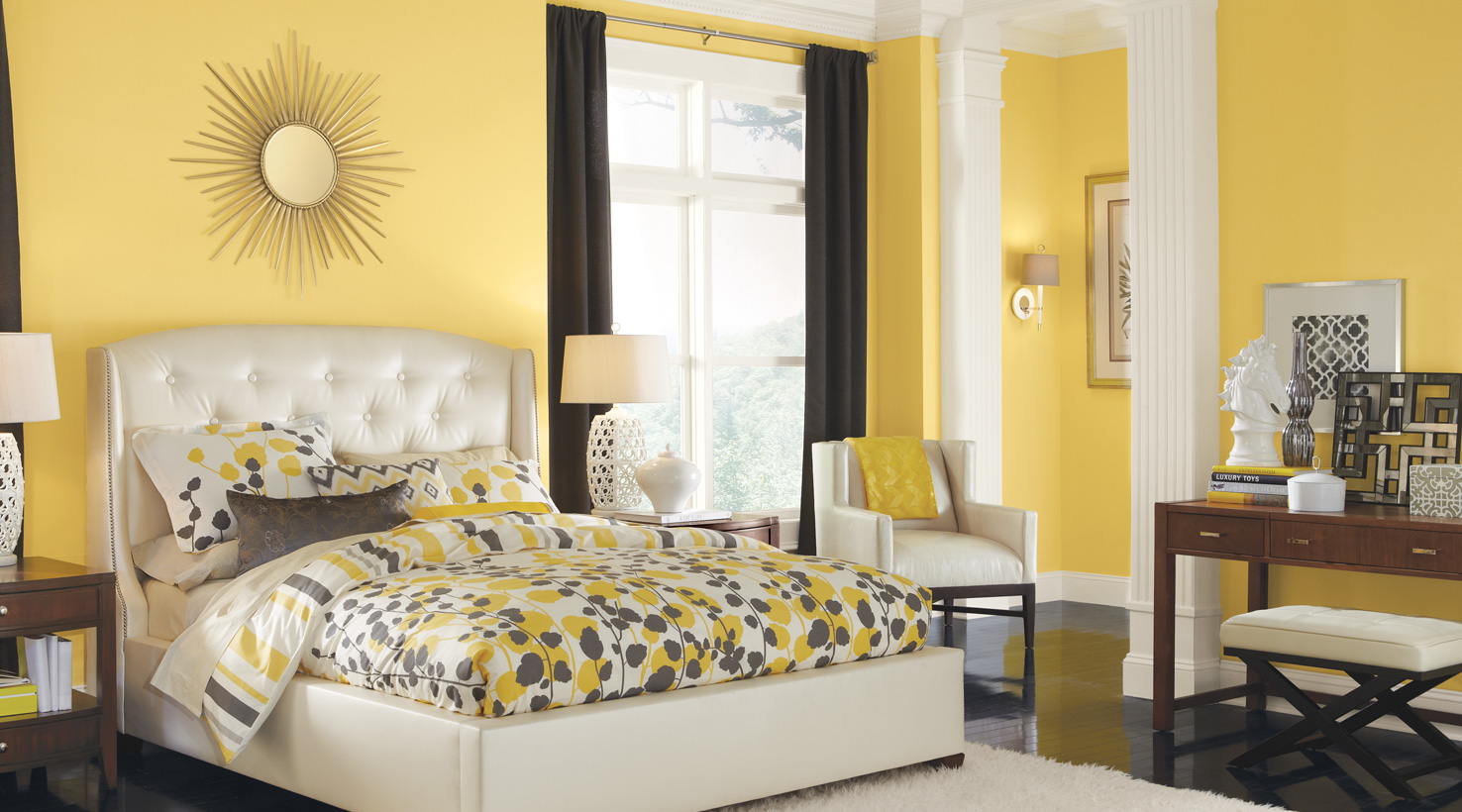bedroom painting colors

if you’re ever pick up a paint colour chipand flipped to the backside, it probably says the name of the colour, the colour code, andoften also something that says light reflectance value. most people will probably never pay attentionto this number. but if you’re a curious individual, whichi assume most of you watching this video are, you might wonder, what does this number meanand what is it used for? light reflectance value is a measurement ofthe amount visible light, when illuminated by a light source, that’s reflected by asurface in all directions and all wavelengths. it’s a value that’s generally used byinterior designers, lighting designers, and architects
to determine what is the most appropriatecolour to use on a surface. of course, it’s not the only factor thatmatters in colour selection, but it is one of the most important, yet also often overlookedaspect of design. light reflectance value not only affects howlight or dark a space looks and feels it also dramatically affects the performanceof lighting sources, the ability to reflect and absorb natural day light, the energy efficiencyof the building, as well as accessibility for people with visual impairments. to understand how light reflectance valueworks, we first have to be clear about what the word “value†means in the contextof colour.
there are three main properties of colour:hue, saturation, and value. hue is the classification of colour on thespectrum, these are your reds, blues, greens, oranges, yellows, etc. while hue is generally important in determiningthe aesthetic feeling of a space, to someone with colourblindness, they may not see a differencebetween colours of different hues. saturation is the intensity of the colour,how dull or muted a colour looks vs. how intense or vivid it is. saturation is often confused with value, asit may seem like an intense colour is “brighter†than a dull colour.
but saturated colours vary in value and oftencan be very dark when it comes to the amount of light it actually reflects. light reflectance value is expressed from0 to 100. 0 means the colour absorbs all the light andreflects nothing. 100 would reflect 100% of the light. in everyday reality though, nothing will absorball the light. i mean, unless your wall is, like, a blackhole, but that would be a big problem. even the darkest paint will usually have anlrv of about 3 to 4. and generally the highest lrv you’ll seeare in the low 90s.
a designer will evaluate what is the functionalrequirement of the space, how much access is there to windows and natural light, whatlighting fixtures are used in the space what is the energy requirement of the project,and use these factors to determine what is the appropriate lrv each surface needs tohave. so lights come in varying levels of lumenoutput. but how much of the light emitted from a sourceultimately ends up being usable depends on a lot of different factors. one of these factors is how reflective thesurrounding environment is. a room, especially the ceiling, that’s paintedin low lrvs colours will dramatically reduce
the amount of light that’s in the space. some environments require higher light levelsthan others. for example a designer will typically specifyceiling lrvs of 85 or more, and wall lrv of 70 or more for office environments where detailtasks are being performed. in a boutique retail shop, or nightclub, lowerlrvs may be used to achieve a darker, more intimate atmosphere. however the designer will still need to ensurethat the light levels are appropriate for employees to perform their tasks and for everyoneto get around safely. in most commercial projects, an interior designerwill coordinate lrvs with a lighting designer,
who will carry out lighting calculations andother photometric assessments in order to develop a lighting plan that achieves requiredlight levels. some property owners and/or municipalitiesmay also have energy requirements such as wattage restriction on artificial lighting,or requiring the use of daylighting. in this case, increasing the lrv of ceilingsand vertical surfaces may be needed to maximize the reflectance of natural light and reducethe amount of artificial lighting needed for the occupant to safety and effectively performtheir tasks. after all, it’s literally a sustainabilitystrategy that costs nothing. designers also use lrv to design spaces thatare inclusive of people with disabilities.
contrary to popular belief, most blind peoplehave some level of vision, but many will have trouble distinguishing one surface from anotherif their values are too similar. thus, using high value contrast between surfacesis crucial in ensuring occupants can get around safely and efficiently. for example, handrails, stair-nosings, startof ramps, edge of platforms, and signage graphics should have a high level of contrast againsttheir surroundings to be visual apparent to the viewer. most accessibility standards recommend a 70%contrast for these locations. this is the formula for calculating 70% contrast.
while in most places it’s only a recommendation,in some locations, such as in detectable warning surfaces in california, it’s a mandatorybuilding code requirement. it’s important to remember that these designdecisions not only helps blind people it makes the environment more accessible to everyone,including near-sighted people like me when i’m not wearing my contacts or glasses,or any person in low-light conditions such as during a power outage when only the emergency lights are on. in my many years of being a designer i’vedefinitely heard people joke about how all we do is pick colours. and honestly i don’t take it as an insult.
while it’s obviously far from all that wedo, choosing the right colour is a really important job. it affects the environmental experience ofthe space, contributes to human comfort, influences energy efficiency, and is crucial in ensuringsafety and accessibility. thanks for watching everyone! if you liked this video, here are some morelike it that you can check out. and don’t forget to subscribe for more tocome. bye for now! *snap*
0 Response to "bedroom painting colors"
Post a Comment